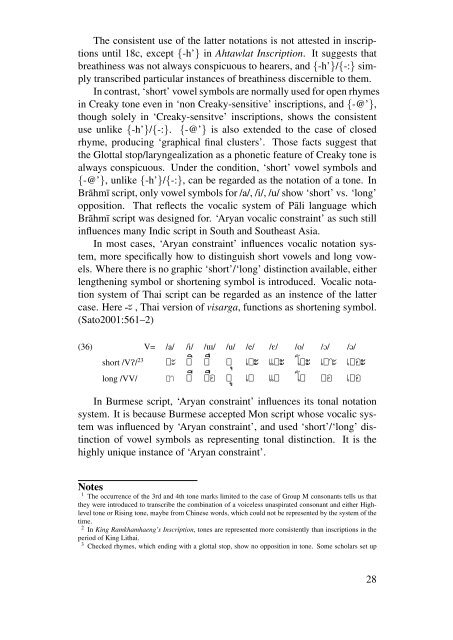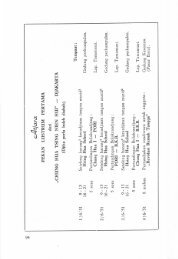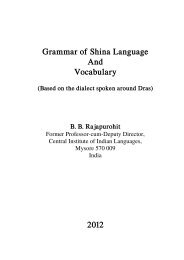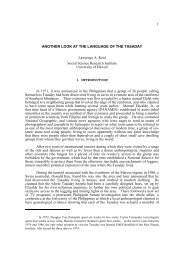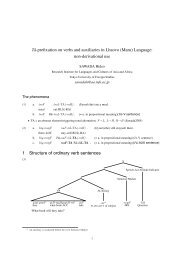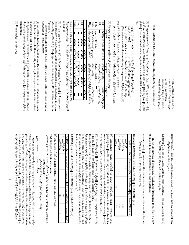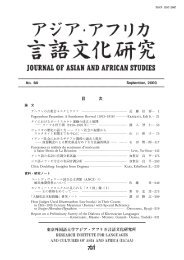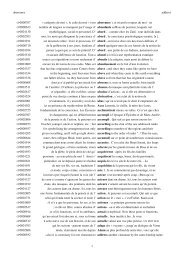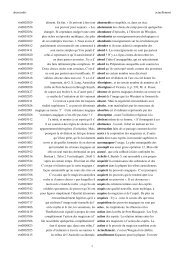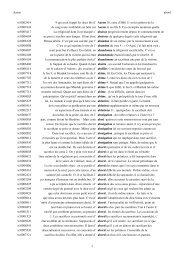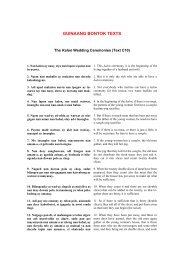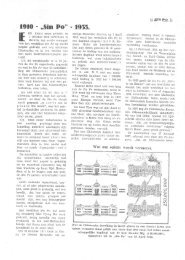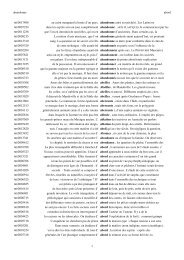Tonal Notation of Indic scripts in Mainland Southeast Asia
Tonal Notation of Indic scripts in Mainland Southeast Asia
Tonal Notation of Indic scripts in Mainland Southeast Asia
You also want an ePaper? Increase the reach of your titles
YUMPU automatically turns print PDFs into web optimized ePapers that Google loves.
The consistent use <strong>of</strong> the latter notations is not attested <strong>in</strong> <strong>in</strong>scriptions<br />
until 18c, except {-h’} <strong>in</strong> Ahtawlat Inscription. It suggests that<br />
breath<strong>in</strong>ess was not always conspicuous to hearers, and {-h’}/{-:} simply<br />
transcribed particular <strong>in</strong>stances <strong>of</strong> breath<strong>in</strong>ess discernible to them.<br />
In contrast, ‘short’ vowel symbols are normally used for open rhymes<br />
<strong>in</strong> Creaky tone even <strong>in</strong> ‘non Creaky-sensitive’ <strong>in</strong>scriptions, and {-@’},<br />
though solely <strong>in</strong> ‘Creaky-sensitve’ <strong>in</strong>scriptions, shows the consistent<br />
use unlike {-h’}/{-:}. {-@’} is also extended to the case <strong>of</strong> closed<br />
rhyme, produc<strong>in</strong>g ‘graphical f<strong>in</strong>al clusters’. Those facts suggest that<br />
the Glottal stop/laryngealization as a phonetic feature <strong>of</strong> Creaky tone is<br />
always conspicuous. Under the condition, ‘short’ vowel symbols and<br />
{-@’}, unlike {-h’}/{-:}, can be regarded as the notation <strong>of</strong> a tone. In<br />
Brāhmī script, only vowel symbols for /a/, /i/, /u/ show ‘short’ vs. ‘long’<br />
opposition. That reflects the vocalic system <strong>of</strong> Pāli language which<br />
Brāhmī script was designed for. ‘Aryan vocalic constra<strong>in</strong>t’ as such still<br />
<strong>in</strong>fluences many <strong>Indic</strong> script <strong>in</strong> South and <strong>Southeast</strong> <strong>Asia</strong>.<br />
In most cases, ‘Aryan constra<strong>in</strong>t’ <strong>in</strong>fluences vocalic notation system,<br />
more specifically how to dist<strong>in</strong>guish short vowels and long vowels.<br />
Where there is no graphic ‘short’/‘long’ dist<strong>in</strong>ction available, either<br />
lengthen<strong>in</strong>g symbol or shorten<strong>in</strong>g symbol is <strong>in</strong>troduced. Vocalic notation<br />
system <strong>of</strong> Thai script can be regarded as an <strong>in</strong>stence <strong>of</strong> the latter<br />
case. Here -H , Thai version <strong>of</strong> visarga, functions as shorten<strong>in</strong>g symbol.<br />
(Sato2001:561–2)<br />
(36) V= /a/ /i/ /W/ /u/ /e/ /E/ /o/ /O/ /@/<br />
short /VP/ 23 CH Ci CI Cu eCH ECH oCH eCAH eCqH<br />
long /VV/ CA CŞ CŤq CU eC EC oC Cq eCq<br />
In Burmese script, ‘Aryan constra<strong>in</strong>t’ <strong>in</strong>fluences its tonal notation<br />
system. It is because Burmese accepted Mon script whose vocalic system<br />
was <strong>in</strong>fluenced by ‘Aryan constra<strong>in</strong>t’, and used ‘short’/‘long’ dist<strong>in</strong>ction<br />
<strong>of</strong> vowel symbols as represent<strong>in</strong>g tonal dist<strong>in</strong>ction. It is the<br />
highly unique <strong>in</strong>stance <strong>of</strong> ‘Aryan constra<strong>in</strong>t’.<br />
Notes<br />
1 The occurrence <strong>of</strong> the 3rd and 4th tone marks limited to the case <strong>of</strong> Group M consonants tells us that<br />
they were <strong>in</strong>troduced to transcribe the comb<strong>in</strong>ation <strong>of</strong> a voiceless unaspirated consonant and either Highlevel<br />
tone or Ris<strong>in</strong>g tone, maybe from Ch<strong>in</strong>ese words, which could not be represented by the system <strong>of</strong> the<br />
time.<br />
2 In K<strong>in</strong>g Ramkhamhaeng’s Inscription, tones are represented more consistently than <strong>in</strong>scriptions <strong>in</strong> the<br />
period <strong>of</strong> K<strong>in</strong>g Lithai.<br />
3 Checked rhymes, which end<strong>in</strong>g with a glottal stop, show no opposition <strong>in</strong> tone. Some scholars set up<br />
28


